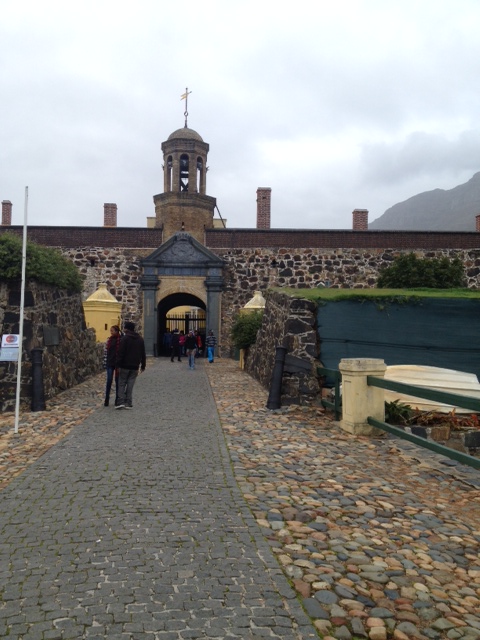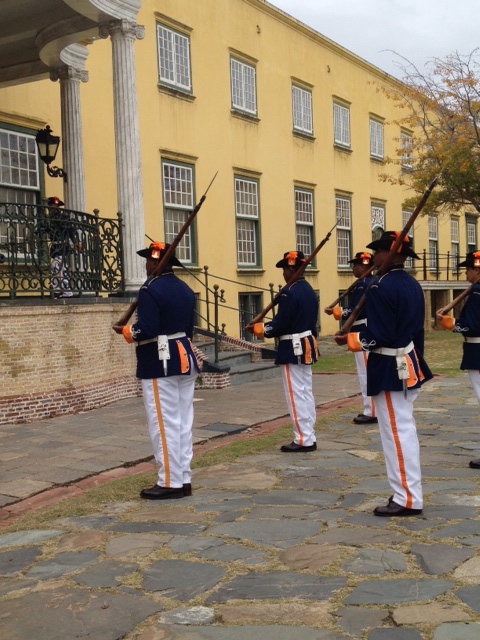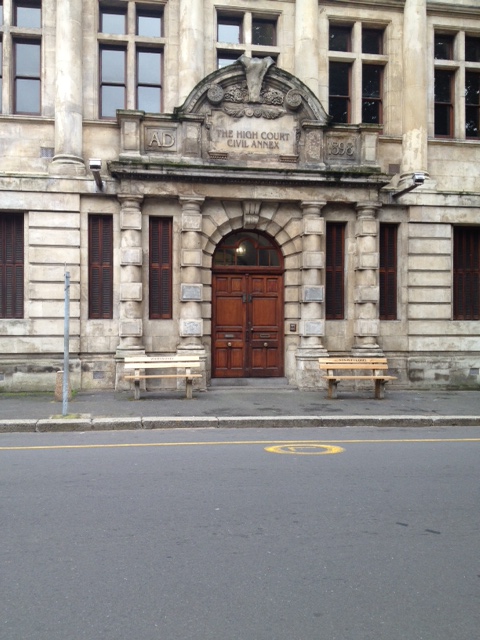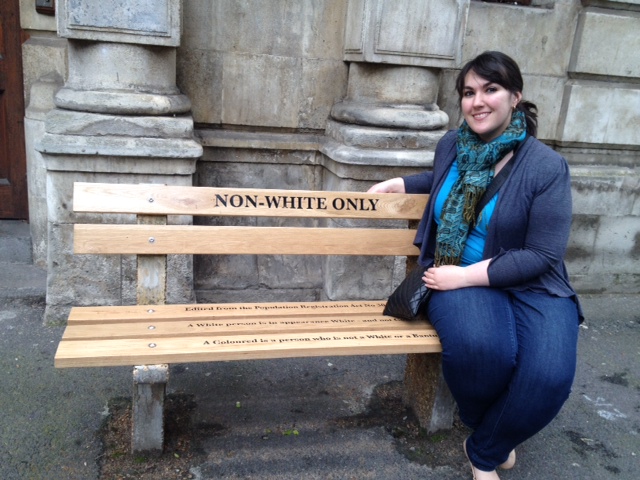The Castle of Good Hope and the High Court
This Saturday, Krishna and I met up with Anna, a friend who had stayed at our hostel but moved hostels to be closer to downtown. Anna recently graduated from university in Germany and is on holiday here in Africa . The three of us decided to take a tour at the Castle of Good Hope. The castle does not resemble the traditional European castle, but is actually more like a five-sided fort. It was built by the Dutch East India Company between 1666 and 1679, which makes it the oldest colonial building in South Africa. Cape Town was intended to be a replenishment station for ships going along the trade route from Europe to Africa and the castle was the center of this replenishment settlement. Later, it was used a military outpost to protect Dutch interests from the British. Today, it is still the military headquarters for the Western Cape, and houses a military exhibit and the William Fehr collection of colonial art and furniture.
The Castle Gate

When the three of us arrived, we were just in time to watch the key ceremony and the firing of the signal cannon. The key ceremony simulates the daily task of opening and locking of the gate during the colonial period, as it was crucial to maintain security in those days. A small company of soldiers approaches the governor’s quarters to obtain the key to open the gate. They then open the gate to let people in or to inspect outside the fort. Finally, they escort it safely back after ensuring the gate was closed and locked. In those days, bells and cannons were also used to promote security. The sounding of bells and the cannons would warn residents of approaching attacks or other news worthy happenings. During the ceremonial firing of the cannon, a replica cannon is used to emulate these warnings and we were warned to plug our ears. However, I must admit that the tiny cannon looked and sounded less impressive than I expected! After the ceremony, we then went on a tour of the castle. We saw the old store rooms, the jail cells, a torture chamber, and a wonderful of the city from the top of the fort’s walls. My favorite, part, however was the William Fehr collection which provided us with an excellent idea of what living quarters in the fort must have been like for the governor and his family. The most interesting piece was the dining room table which could seat a hundred guests. That would be one large dinner party!
The Key Ceremony

Marching to the Gate

The Tiny Signal Cannon

After the tour, we decided to stroll around downtown Cape Town. We walked by the Parliament buildings, which are currently quiet as Parliament has just gone on its winter holiday. We then went through the Company’s Garden. As the name suggests, the garden were originally built and cultivated by the Dutch East India Company. The company used it to grow vegetables and fruits for the replenishment provisions of the ships that stopped by Cape Town on their way to Asia. Today, it is a nice public park and has many beautiful flowers and trees. There is also an aviary, a Japanese gazebo, a fish pond, and some of the most well-fed squirrels I have ever seen. This is due to the peanut vendors stationed at the entrances of the gardens who sell their wares to tourists who then over feed the precocious squirrels.
The Company's Garden

Upon exiting the garden, we came upon the High Court Building. It too, was closed and quiet, but in front of the building were two benches. One was labeled “whites only” and the other as “non-whites only.” They serve as reminders of the not so distant history of South Africa where segregation was the law of the land. Apartheid, which means “the state of being apart,” in Afrikaans, was only abolished in 1991. However, many South Africans do not mark the end of apartheid until the general elections were held in 1994, when many “blacks” and “coloreds,” as they were categorized by the apartheid regime, were finally able to vote for the first time. It is sobering to realize that not only was this during my lifetime, but I would have been six years old at that time.
The High Court Building

Fortuitously, Justice Albie Sachs, a former South African constitutional court justice visited William and Mary Law School just a few weeks before I travelled here to Cape Town. During his talk, he told the audience that he joined the anti-apartheid movement when he was a young boy. To protest apartheid, he used to sit on "non-white only" benches. Because he is white, this was illegal. He hoped this civil disobedience would lead to his arrest and draw attention to the anti-apartheid cause. Unfortunately, his plan was thwarted during his hearing when the judge told him that he would not be charged with breaking the law and that he would instead be “sent home to his mother.” It was an amazing experience to sit on a bench similar to the one that Justice Sachs and many other protestors sat on!
Sitting on the Non-White Only Bench



